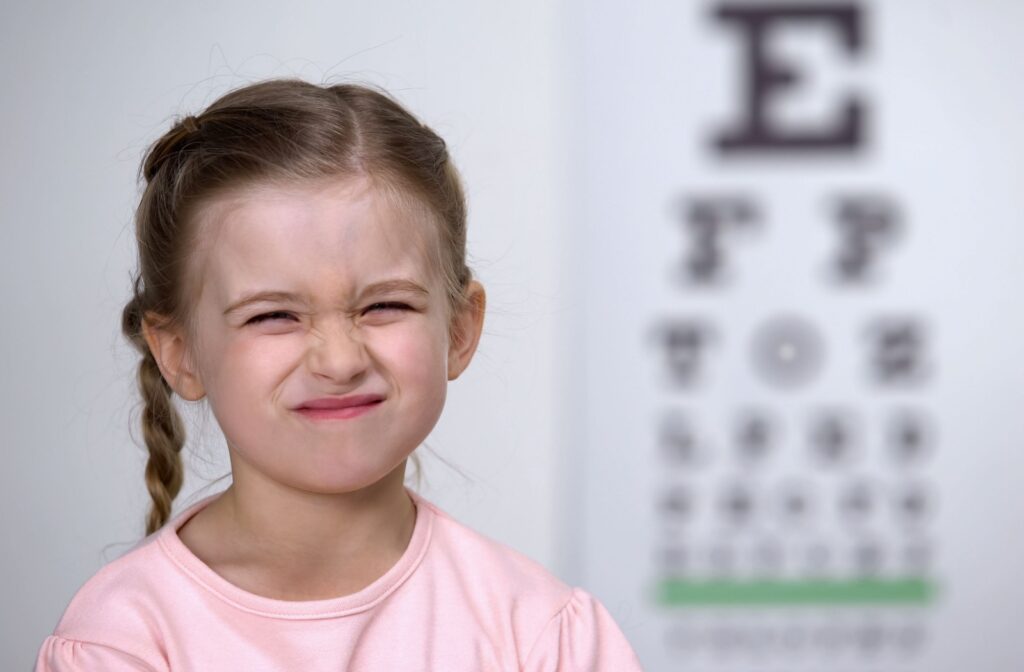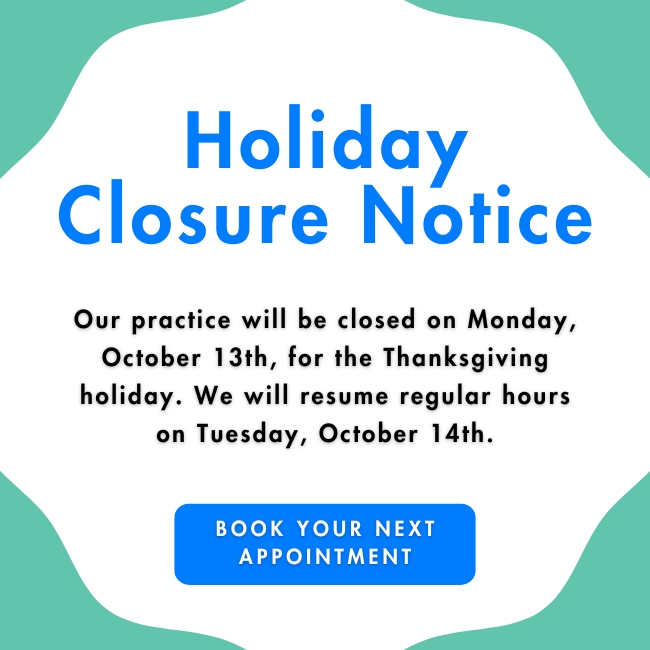Myopia is becoming increasingly common in children and often shows up during the early school years. Glasses or contact lenses can help correct blurry vision, but they don’t tell the whole story.
In many cases, myopia progresses as your child grows. While it can’t be reversed, regular eye exams combined with approaches to myopia control can help protect your child’s future vision.
Why Does Myopia Develop?
Myopia (nearsightedness) typically begins in childhood, most often between the ages of 6 and 12, and can progress through the teenage years and into early adulthood.
Both genetics and lifestyle factors influence the development and progression of myopia. Children with one or both nearsighted parents are more likely to get myopia themselves. At the same time, frequent near work (like reading or using screens) can contribute to worsening vision and progression in myopia.
Spending time outdoors has been shown to benefit children’s eye health. Natural light also helps support normal eye development, making outdoor play an important protective factor for kids.
Understanding Myopia
Myopia occurs when the eye grows too long or when the cornea (the clear front surface of the eye) grows too steep. These structural changes alter how light focuses in the eye, resulting in a refractive error.
Myopia leads to blurry distance vision and may cause:
- Difficulty seeing clearly at a distance
- Squinting to bring distant objects into focus
- Eye strain or fatigue
Does Myopia Get Worse Over Time?
In many children, myopia worsens as their eyes continue to grow. For most people, this process begins to slow in early adulthood when the eyes reach full maturity.
However, myopia can still progress in adulthood in some cases. Even if your vision has been stable for years, lifestyle choices can influence changes over time.
Why Myopia Progression Matters
Mild myopia is generally manageable, but high myopia—typically defined as a prescription of -6.00 diopters or more—carries a higher risk of complications.
As myopia progresses, it becomes more vulnerable to structural damage. Higher levels of myopia are associated with an increased risk of serious eye conditions, including:
- Retinal detachment: When the retina pulls away from the back of the eye, leading to potential vision loss.
- Glaucoma: A condition involving increased intraocular pressure that can damage the optic nerve.
- Macular degeneration: Damage to the macula, the part of the retina responsible for central vision.
Targeted tools and treatments can do more than improve vision. They’re designed to help slow eye growth and reduce the risk of high myopia-related complications later in life.

How Myopia Control Can Help
While myopia can’t be reversed, it can be managed. Early intervention can help to slow progression and protect long-term vision, especially while the eyes are still developing.
There are several clinically supported myopia control options available. Each is designed to suit a range of ages, prescriptions, and lifestyles. These options include various types of contact lenses, glasses/optical and topical medications.
How Northern Lights Optometry Can Help
Myopia might start with a simple pair of glasses, but managing it is about more than just seeing clearly. Slowing the progression of this condition can help reduce the risk of progression in time.
Whether your child is newly diagnosed or their prescription keeps changing, there are safe, effective options to help protect their vision. Book your appointment today and help your child see clearly for years to come.





